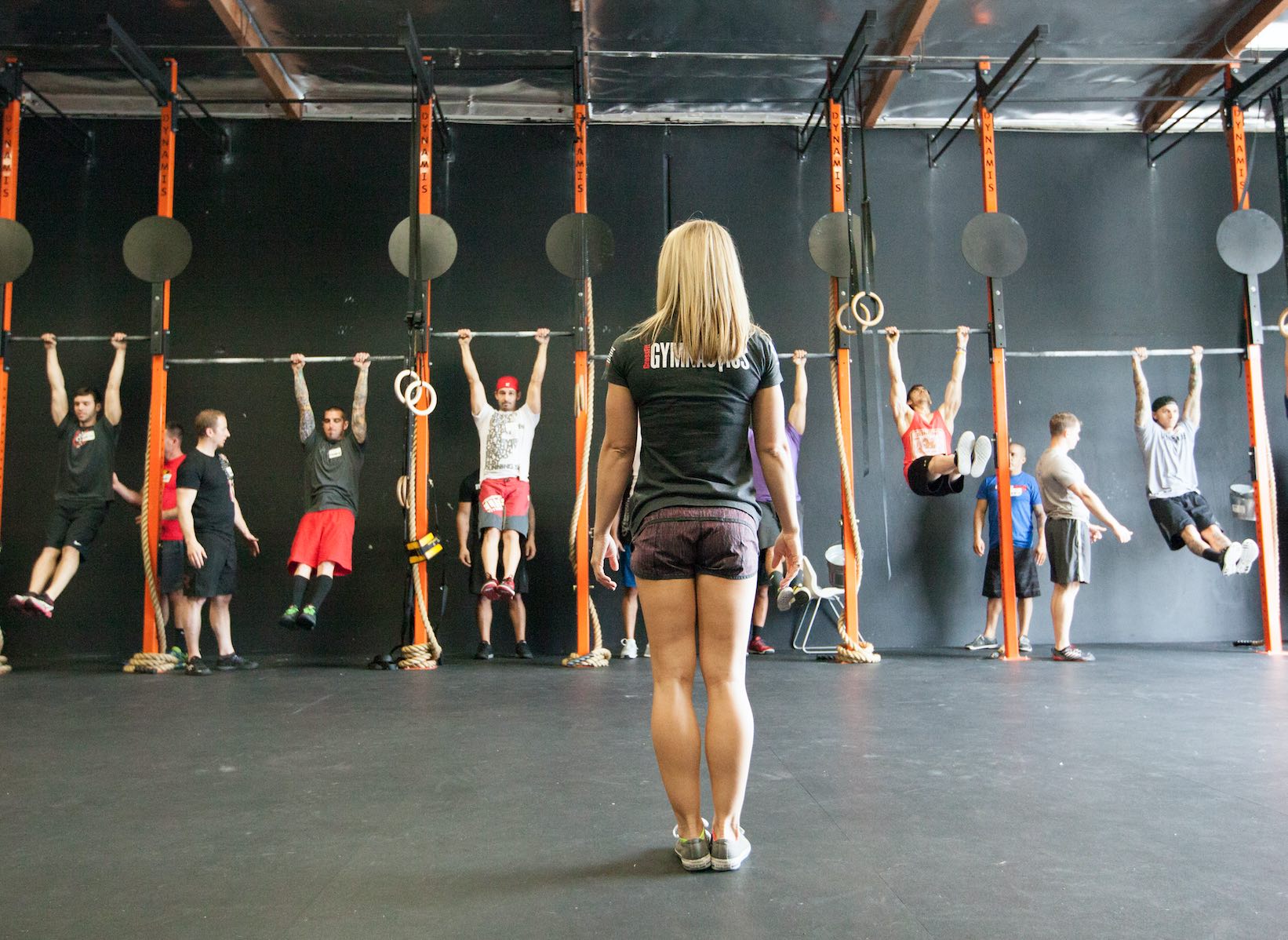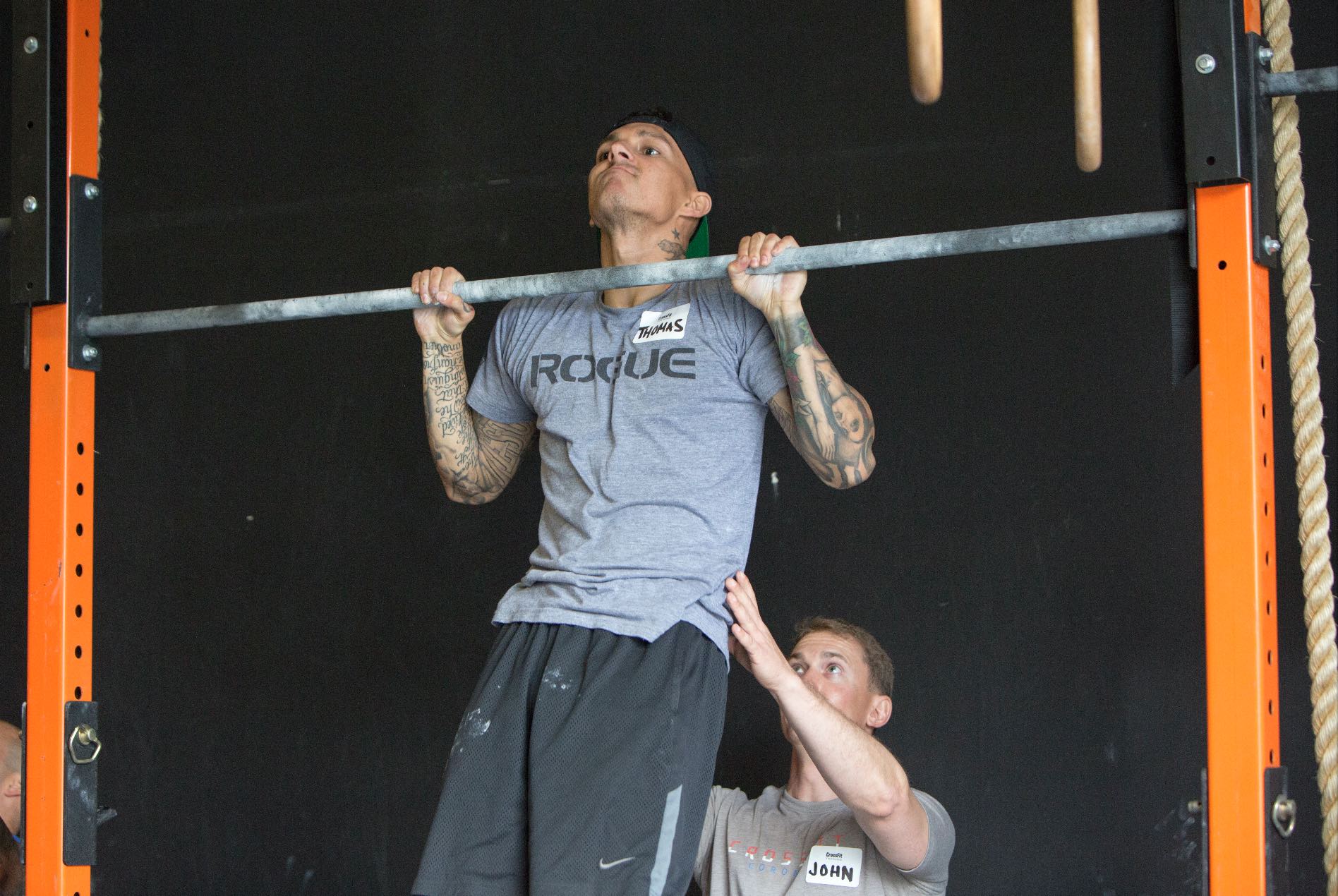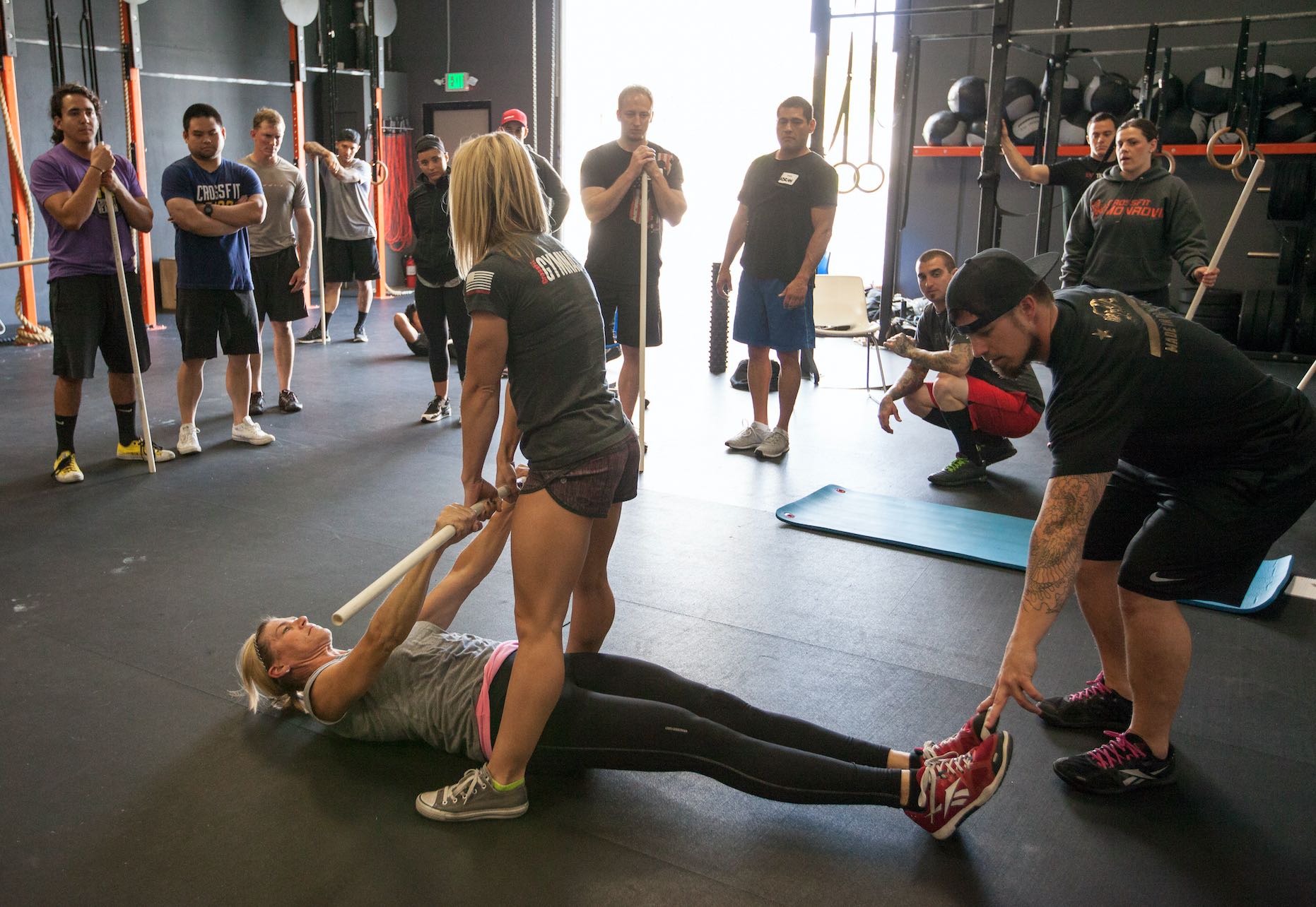
The CrossFit Gymnastics Trainer Course sets athletes up for a lifetime of strength and movement.
“I’ve got a 70-year-old man who took our course eight years ago who’s almost got a full iron cross,” said Jeff Tucker, subject-matter expert of CrossFit Gymnastics. “He’s 70-plus years old now, and he’s still working his iron cross.”
And just as the septuagenarian has strived for almost a decade to perform an iron cross, Tucker and his team have worked to improve the 16-hour CrossFit Gymnastics Trainer Course over the last nine years.
Tucker explained that the course has grown organically since its creation in 2007. The two-day seminar constantly but quietly evolved as Tucker and his staff evaluated ways to improve, and significant adjustments have been made over the last year in response to post-seminar feedback from attendees.
The course has always focused on basic strength and how to coach, spot and scale gymnastics movements performed on the floor, parallettes, rings or bars. That hasn’t changed, but Tucker recently reviewed the flow of the entire weekend and looked for ways to make adjustments based on self-assessment and community feedback from surveys of the course. Currently, he and his team are reworking the syllabus for future courses.
For instance, the planche is one element that is now demonstrated but not instructed in great detail, allowing the CrossFit Gymnastics trainers to spend more time on other movements requestedby the community in the past year.
“Rather than spending a lot of time on what frankly is an advanced movement, we’re going to kind of use it as a piece to show where all of our course can go. … We’ve decided to put more information into handstand development, handstand walking, handstands on elevated platforms like parallettes,” Tucker said.
The seminar will also place greater emphasis on pistols/one-legged squats, rope climbs and additional kipping progressions, including progressions for butterfly chest-to-bar pull-ups.
While many people immediately skip ahead to the end of the progression and want to bang out large sets of butterfly pull-ups, the key is where the progression starts. You lay the tracks very carefully before racing a train across them at speed.
“Any movement we do in gymnastics, it’s always going to be rooted by the basics—how do we coach the basics, how do we cue the basics, how do we develop the basics?” Tucker said. "Furthermore, it’s about strength and form development before speed.”
 Kipping progressions are a part of the CrossFit Gymnastics Trainer Course, but the focus is always on strength and form before speed.
Kipping progressions are a part of the CrossFit Gymnastics Trainer Course, but the focus is always on strength and form before speed.
Recall the novice’s curse, as detailed in “Virtuosity” by CrossFit Founder and CEO Greg Glassman, a former gymnast. Far too often, athletes try to snatch before they can perform a good overhead squat, and the gymnastics world is no different: How many people who are trying to walk on their hands can hold a solid handstand for 30 seconds?
With that in mind, the CrossFit Gymnastics Seminar is designed to give athletes the solid foundation they need for long-term success.
“Before you even lift a barbell, what do you have to do?” Tucker asked. “You have to know how to address the bar before you put weight on it, before you lift that bar and drop your ass under it and stand up with it. There’s so many nuances.”
In gymnastics, it starts with little things such as how to grip a bar properly, how to engage the right muscles, how to achieve the correct positions, how to build strength for strict movements and how to add momentum. For athletes who have a good foundation including the required strength, Tucker and his staff will find ways to ramp things up and build more strength in body-weight skills.
 At the CrossFit Gymnastics Trainer Course, attendees learn how to develop strength and body control as athletes, and they also learn how to instruct and spot when coaching.
At the CrossFit Gymnastics Trainer Course, attendees learn how to develop strength and body control as athletes, and they also learn how to instruct and spot when coaching.
For example, an athlete who can’t perform a pull-up will be taught exactly how to work toward a first rep, while an athlete who can do 50 pull-ups will work on strict reps in a hollow-body position. If that’s too easy, he or she can work on pull-ups in an L-sit. And so on. Difficulty can always be increased by tweaking the movement’s load or leverage requirements, making athletes stronger over time.
“The movement is the same for the beginner and it’s the same for the individual that’s been competing. The difference is going to be how we load it or the length of time spent in an isometric hold, along with repetition of any skill,” Tucker explained.
 Learning how to activate the correct muscles is a basic step many athletes bypass, but it is fundamental to success in gymnastics.
Learning how to activate the correct muscles is a basic step many athletes bypass, but it is fundamental to success in gymnastics.
Overall, the weekend is designed to lay or reinforce the groundwork and point athletes in the right direction for constant improvement. And in gymnastics, the wealth of movements and the near-endless variations ensure athletes can spend a lifetime getting stronger and learning to control their bodies with skill.
“This is their beginning journey. You don’t come in a weekend and—boom!—you’re a gymnast or gymnastics trainer,” Tucker said. “This is your beginning journey towards body-weight training and body-weight movement, and there’s always going to be something more to learn and improve on.”
He added: “Throughout the weekend, my hope is that by the end of the close on Sunday that everybody has a better understanding of how to do the basics, how to spot the basics, how to cue the basics, and how we ramp that up.”
For an older athlete who took the course in 2008 in Australia, ramping things up meant spending more than 2,900 days working on an iron cross.
What gymnastics skills could you learn over the next eight years?
About the Author: Mike Warkentin is the managing editor of the CrossFit Journal and the founder of CrossFit 204.
Photos: Alicia Anthony/CrossFit Journal
No comments:
Post a Comment